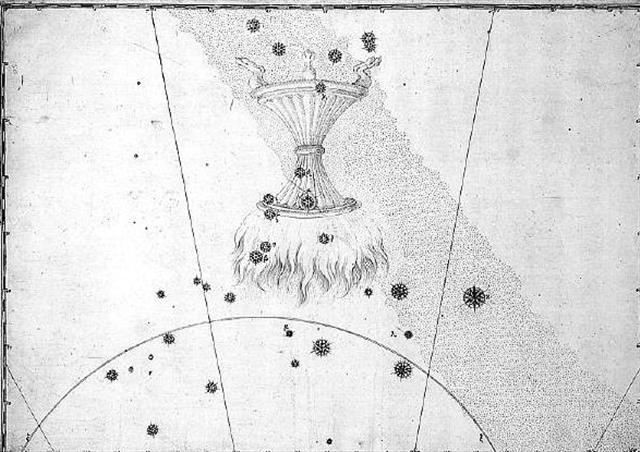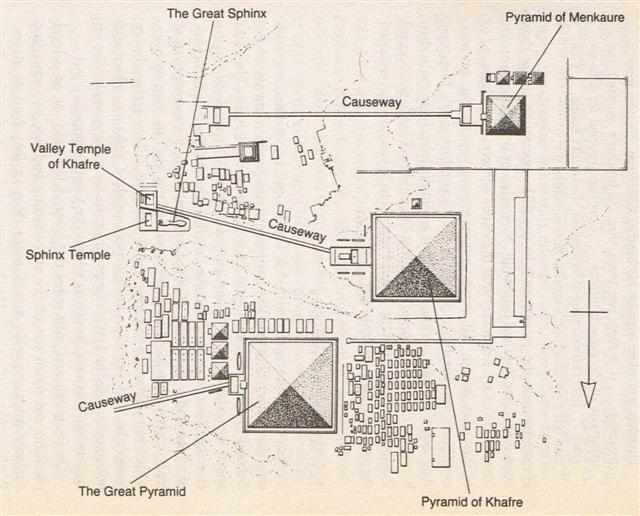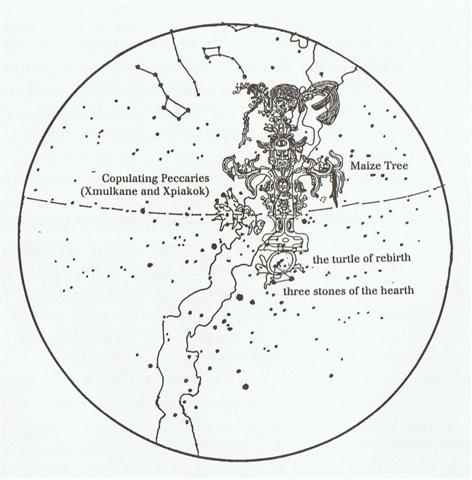330. Once again. The circuit of Lono (Rogo) seems to have begun 10 nights after Alcyone (*56) in the Pleiades had returned to visibility (*56 + *16 = *72),
viz. in the night when (*72 + *10 =*82) the Full Moon had been at Mintaka (*82), the 'Belt' star, the first of the 3 stars in the Belt of Orion, indicating that the Sun had reached the Club star in the Fire Altar:
At the time of Bharani the Sun had been at Mintaka in Vaitu Potu 1 (121 = 11 * 11) = 98 (APRIL 8) + 23 ... Possibly the circuit of Lono (23 days) referred to the precessional distance (*64 - *41) down from the time of Bharani to that of the Bull (when Hyadum II had been at 0h) ... and Mintaka had been at the Full Moon in day 98 (APRIL 8) + 182 = 280 (OCTOBER 7) = Tagaroa Uri 30 (303) - 23 when the Sun had reached the Fire Altar. The precessional depth down from the time of rongorongo to that of the Bull was*64 right ascension days and therefore OCTOBER 7 (280) corresponded to right ascension day *200 (i.e. equal to the glyph number of Ga7-31) + *64 = *264 (= 344 - 80), which means that at the time of rongorongo Mintaka had moved ahead with 64 nights to December 10 (344).
... And the page number in the manuscript (E:86) could have been used as a hint of the position of Rei when the Full Moon was at κ Orionis (the Sword, Saiph) - the last star in the triangular pattern for rebirth south of the equator:
... When Ira's canoe reached the islets (off the southwestern coast), Makoi (who was staying behind) shouted the following (after him): Eight lands (are there), one has been found (or, an eighth land has been found for the first time, evaru kainga katahi i revaa), that is, Te Pito O Te Kainga. During the fast journey, one cannot find the seven lands in the midst of dim twilight. Once (Easter Island) has been lost, not even eight groups of people (i.e., countless boat crews) can find (it) again. - Ruhi to the right, Pu to the left, necklace around the neck of Hinariru at Papa O Rae! (E:86)
The enigmatic Ruhi to the right, Pu to the left, and Hinariru in the middle could therefore possibly be associated with Khufu, Menkaure, respectively with Khafre. Khufu was at the right because Mintaka was the 'Belt' (a male attribute) whereas Menkaure was the 'Girdle' (a female atribute). The sword arm is the right arm and the left arm holds the baby close to her heart. ... Menkaure was allegedly a much more benevolent Pharaoh than his predecessors. According to legends related by Herodotus, he wrote the following: This Prince (Mycerinus) disapproved of the conduct of his father, reopened the temples and allowed the people, who were ground down to the lowest point of misery, to return to their occupations and to resume the practice of sacrifice. His justice in the decision of causes was beyond that of all the former kings. The Egyptians praise him in this respect more highly than any other monarchs, declaring that he not only gave his judgements with fairness, but also, when anyone was dissatisfied with his sentence, made compensation to him out of his own purse and thus pacified his anger. The Gods however ordained that Egypt should suffer tyrannical rulers for a hundred and fifty years according to this legend. Herodotus goes on: ... An oracle reached him from the town of Buto, which said 'six years only shalt thou live upon this earth, and in the seventh thou shalt end thy days'. Mycerinus, indignant, sent an angry message to the oracle, reproaching the god with his injustice - 'My father and uncle,' he said 'though they shut up the temples, took no thought of the gods and destroyed multitudes of men, nevertheless enjoyed a long life; I, who am pious, am to die soon!' There came in reply a second message from the oracle - 'for this very reason is thy life brought so quickly to a close - thou hast not done as it behoved thee. Egypt was fated to suffer affliction one hundred and fifty years - the two kings who preceded thee upon the throne understood this - thou hast not understood it'. Mycerinus, when this answer reached him, perceiving that his doom was fixed, had lamps prepared, which he lighted every day at eventime, and feasted and enjoyed himself unceasingly both day and night, moving about in the marsh-country and the woods, and visiting all the places he heard were agreeable sojourns. His wish was to prove the oracle false, by turning night into days and so living twelve years in the space of six ... Menkaure had changed into a female and could then live on also in the nights like the Moon. The central star in the triplet - corresponding to the pyramid of Khafre which was equal in size to the pyramid of Khufu - could have been regarded as dual (like Janus), viz. Heka (λ) together with Alnilam (ε), where the Greek letters tell us about death (†) respectively of a new life, rebirth (*). There were 2 mother-of-pearl necklaces around the neck of the figure of Hinariru. ... It grew light on the third day, and again Ira said, 'Go back to swimming on a board, to riding the waves!' All went back out there, and Ira got up. He picked up two stone figures (moai maea) and two mother-of-pearl necklaces (tuitui reipa). The name of the first stone figure was Apina Iti, and the second one was Rapa Kura. Ira took the figures and the ornaments, went on, and came to Apina Iti. He dug a pit, let the figure slide down into the pit, and covered it up with pebbles (kirikiri). The head remained completely free (? he puoko i hakapaka). He put the necklace around the neck of the figure and called the place 'Apina Iti A Rapa Kura'. Ira gave the stone figure [earlier named Apina Iti] the name 'Hinariru', the name of the master, (son) of Tuu Hokorua, who had given the figure to Ira. He turned around, went on, and entered the cave Pu Pakakina and remained there. All the young men arrived and settled down (to sleep) ... One of them surely could have referred to Alnilam (the String of Pearls), while the other one possibly could have referred to Tui - another name for the 3 belt stars (Tau-toru). Tui. 1. To sew mats, to make strings. E-tahi tuitui reipá i Te Pei, ekó rava'a e-varu kaukau; i-garo ai i Hiva, i te kaiga, a necklace of mother-of-pearl is on te Pei, few will find it (lit: eight groups of people); it has remained in Hiva, in our homeland. 2. The three stars of Orion's Belt. Vanaga. ... There is a couple residing in one place named Kui [Tui] and Fakataka [Haka-taka = go araound in a circle]. After the couple stay together for a while Fakataka is pregnant. So they go away because they wish to go to another place - they go. The canoe goes and goes, the wind roars, the sea churns, the canoe sinks. Kui expires while Fakataka swims. Kui went down and drowned but Fakataka kept on swimming in order to reach a new land and give birth to a little boy. This little boy could be the new year. Fakataka swims and swims, reaching another land. She goes there and stays on the upraised reef in the freshwater pools on the reef, and there delivers her child, a boy child. She gives him the name Taetagaloa. When the baby is born a golden plover flies over and alights upon the reef. (Kua fanau lā te pepe kae lele mai te tuli oi tū mai i te papa). And so the woman thus names various parts of the child beginning with the name 'the plover' (tuli): neck (tuliulu), elbow (tulilima), knee (tulivae).
|
|||||||||||||||||||||||||||||||||||||||||||||||||||||||||||||||||||||||||||||||||||||||||||||||||||||||||||||||||||||||||||||||||||||||||||||||||||||||||||||||||||||||||||||||||||||||||||||||||||||||||||||||||||||||||||||||||||||||||||||||||||||||||||||||||||||||||||||||||||||||























